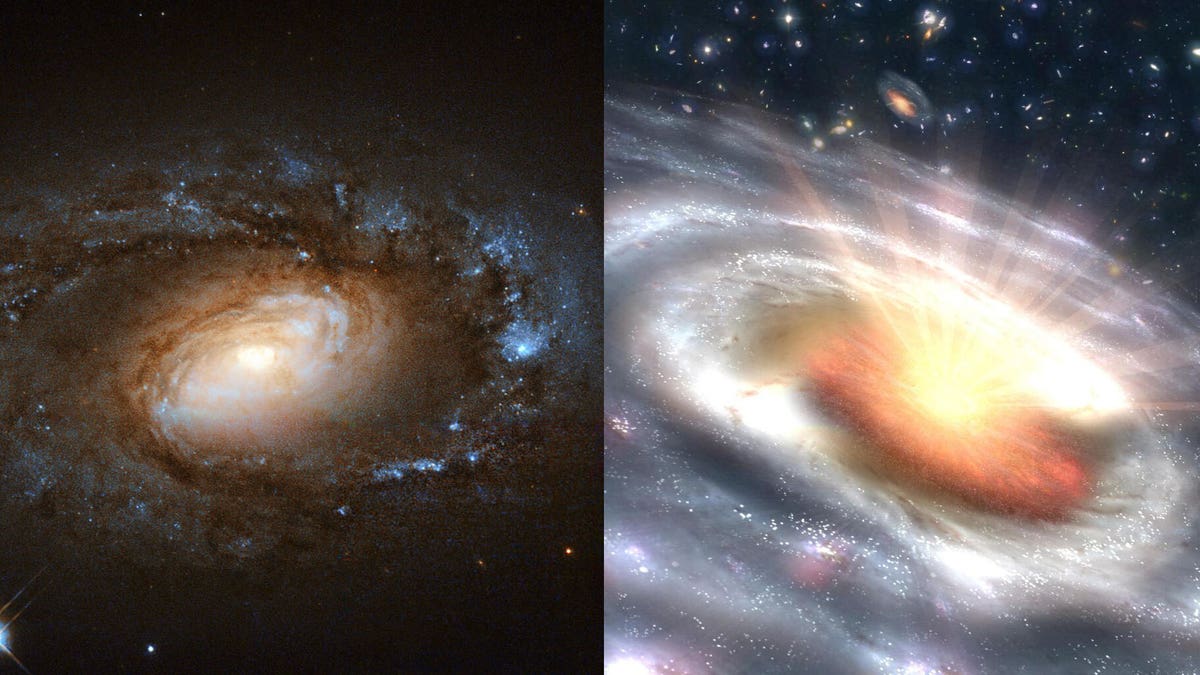Scientists release the first picture of a black hole ever captured
Scientists have obtained the first image of a black hole, using Event Horizon Telescope observations of the center of the galaxy M87.
Astronomers have spotted “dramatic” black holes in six galaxies, which could shed new light on galactic evolution.
“We found a whole new class of active galactic nucleus capable of transforming a wimpy galaxy to a luminous quasar,” said Suvi Gezari, an associate professor of astronomy at the University of Maryland, which led the research project, in a statement. “Theory suggests that a quasar should take thousands of years to turn on, but these observations suggest that it can happen very quickly.”
A quasar is a highly active supermassive black hole.
BLACK HOLE DEVOURING A NEUTRON STAR CAUSED RIPPLES IN SPACE AND TIME, SCIENTISTS SAY
The six galaxies are what is known as low-ionization nuclear emission-line region (LINER) galaxies. Astronomers were surprised to see the “mild-mannered” galaxies suddenly turn into “ravenous” quasars.

A low-ionization nuclear emission-line region (LINER) galaxy (infrared and visible light imagery - left) and an artist's impression of a blazing quasar (right). (ESA/Hubble. NASA and S. Smartt [Queen's University Belfast]/NASA/JPL-Caltech)
“Our findings confirm that LINERs can, in fact, host active supermassive black holes at their centers,” said Sara Frederick, a graduate student in the University of Maryland’s Department of Astronomy, and the research paper’s lead author, in the statement. “But these six transitions were so sudden and dramatic, it tells us that there is something altogether different going on in these galaxies. We want to know how such massive amounts of gas and dust can suddenly start falling into a black hole.”
Astronomers harnessed data from the Zwicky Transient Facility, a sky survey project at Caltech’s Palomar Observatory near San Diego for their research. The study was published in the Astrophysical Journal.
BLACK HOLE DEVOURING A NEUTRON STAR CAUSED RIPPLES IN SPACE AND TIME, SCIENTISTS SAY
“For one of the six objects, we first thought we had observed a tidal disruption event, which happens when a star passes too close to a supermassive black hole and gets shredded,” Frederick said, in the statement. “But we later found it was a previously dormant black hole undergoing a transition that astronomers call a ‘changing look,’ resulting in a bright quasar. Observing six of these transitions, all in relatively quiet LINER galaxies, suggests that we’ve identified a totally new class of active galactic nucleus.”
Scientists have been gaining plenty of new insight into black holes. In a separate project, experts recently announced that a black hole swallowing a neutron star has likely been detected for the first time.
CLICK HERE TO GET THE FOX NEWS APP
In another project, scientists released the first-ever image of a black hole earlier this year, revealing the distant object in stunning detail.
Follow James Rogers on Twitter @jamesjrogers
